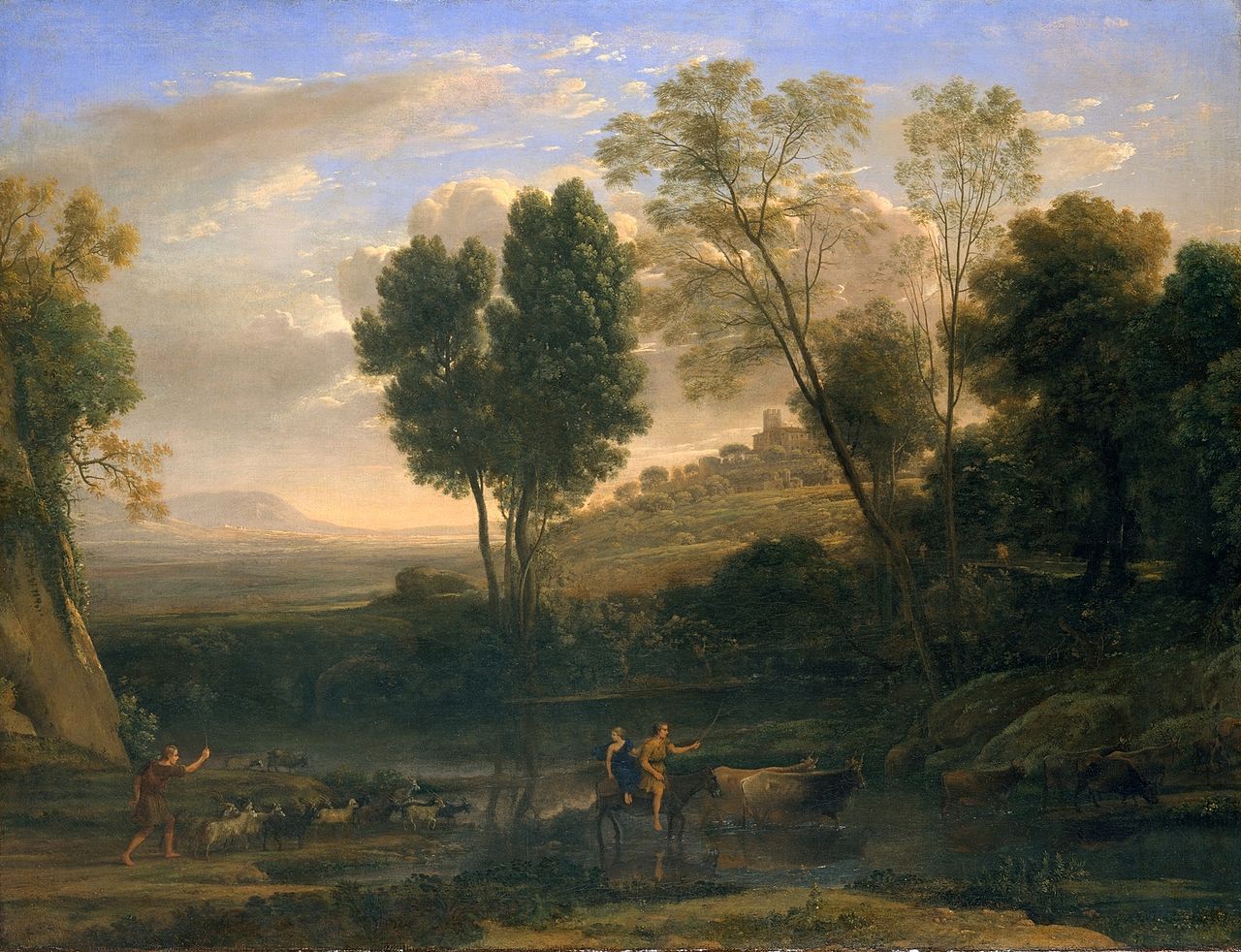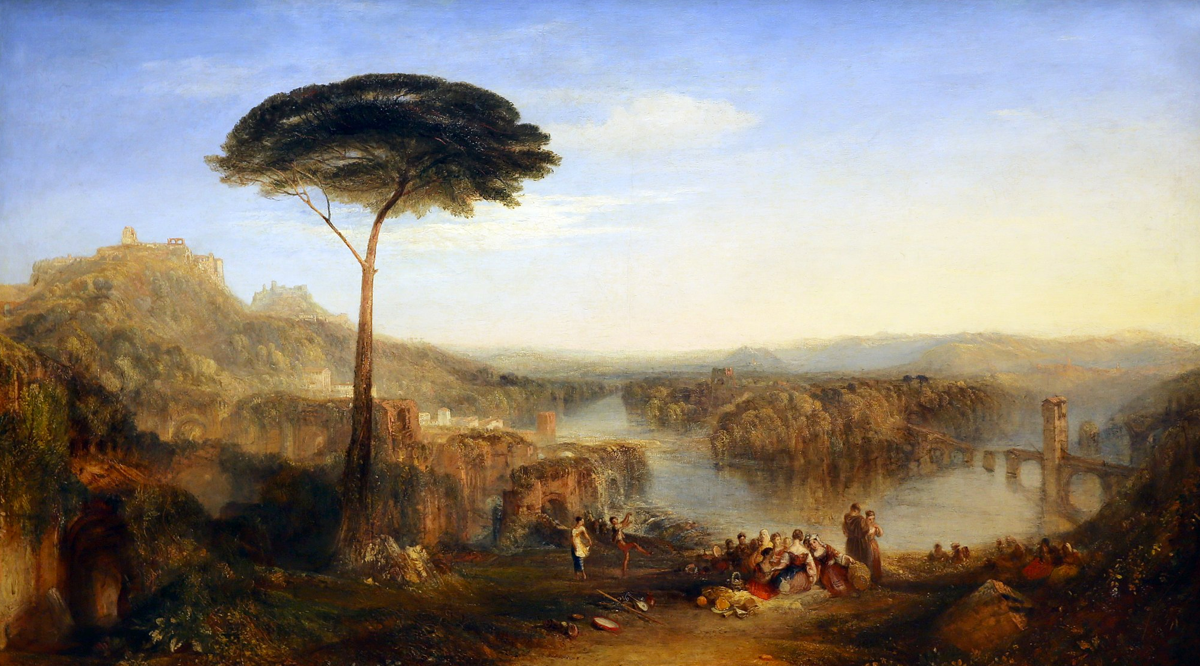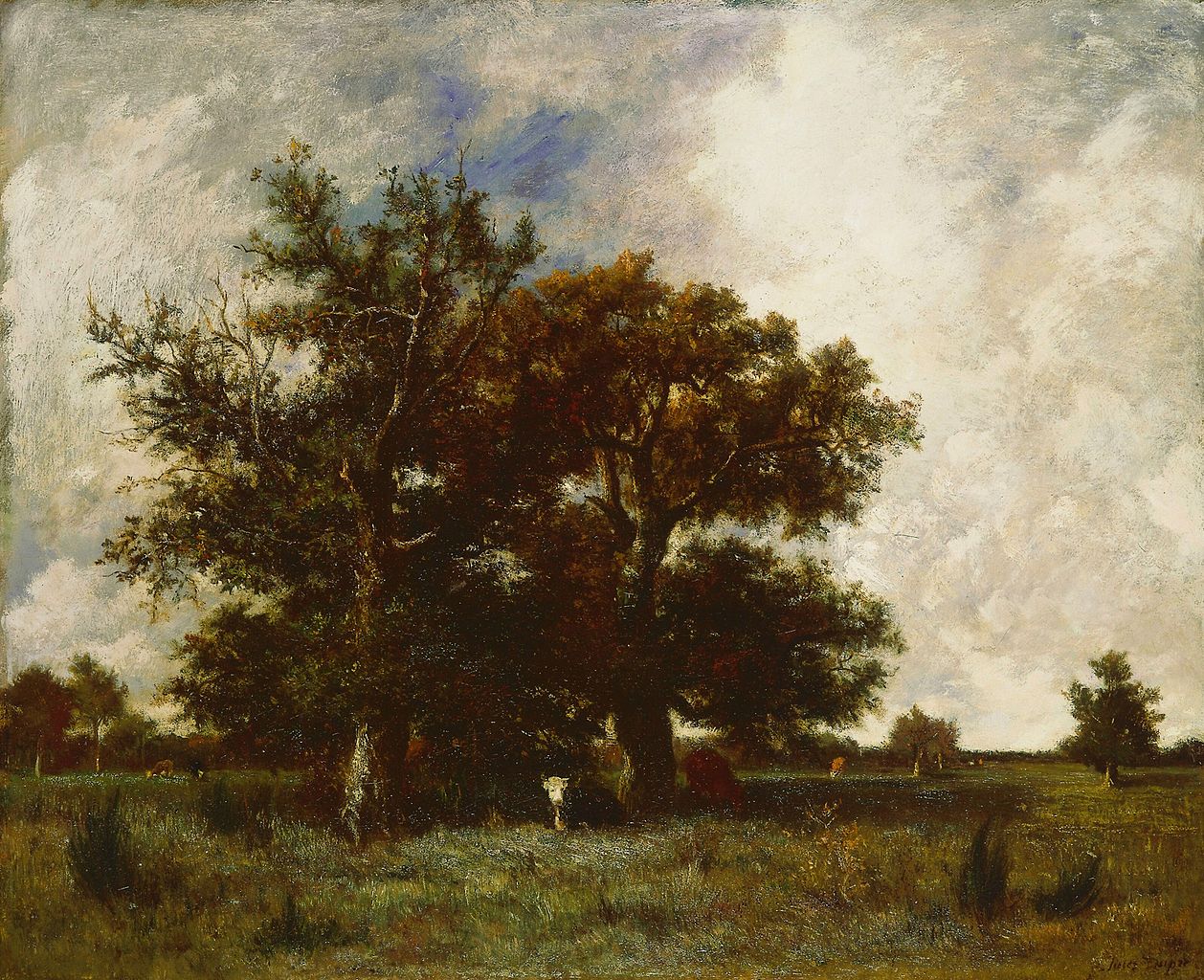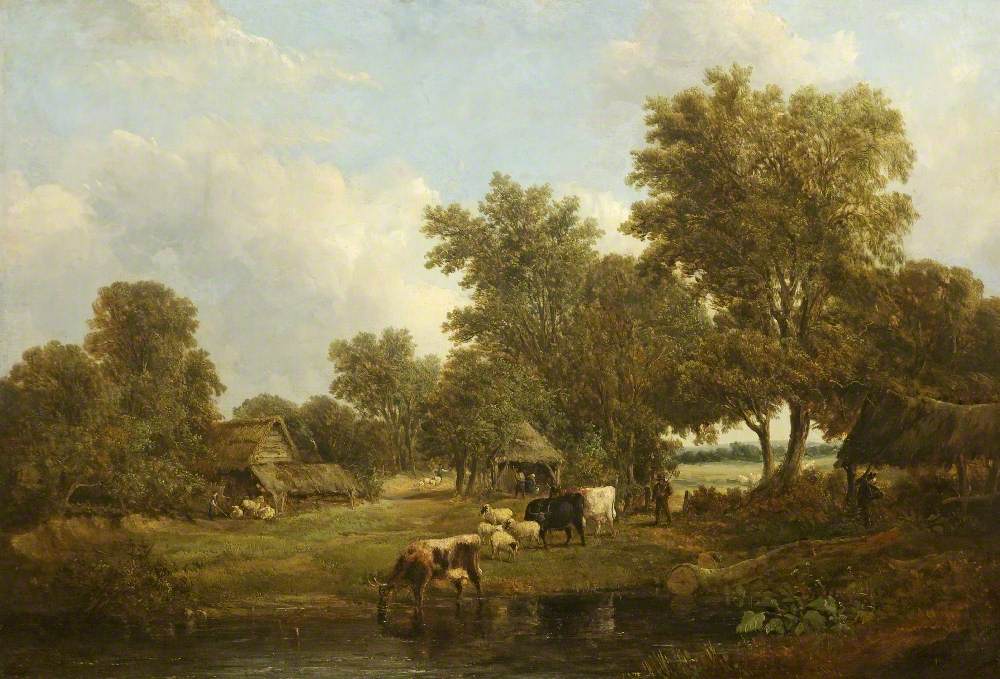British artist Alfred Vickers is predominantly known for his rugged landscapes, which depict scenic views from the mountains of North Wales to the lowlands of Kent. He was an important contributor to the development of naturalistic landscape painting.
The next time you’re wandering through nature, perhaps on a walk through picturesque woodland, slow down and really look. Notice the seemingly infinite forms of limber branches, the copious hues within a single field, the sky with its complex passing clouds and the ever-changing effects of light.
Try to hold your attention as fresh shadows glide across the vista tempting your eyes to leap from spot to spot. Nature is impossible, its infinite beauty teases before pushing away. Even the most-revered of artists have fallen at its feet, exhausted, with brush in hand - forlornly staring at a canvas, which lacks immediacy, truth and power.
Imagine trying to capture nature while also being lectured that you need to elevate the scenery with Italianate references and noble allegory. What would be the point of studying outdoors when you could simply work from old engravings and copy the masters?
Claudian Visions
In early 19th-century Britain, the Royal Academy in London was still hung up on the firm views of its former President Sir Joshua Reynolds. Between 1769 and 1790, he'd urged students to lift landscape painting above its lowly status by referencing the works of continental masters, such as Claude Lorrain (1600-1682). Only then would the aristocratic patron look more favourably upon it.
Landscapes should contain figures to represent tales from mythology, allowing viewers to discuss their moralistic implications. A good painting needed to spark a conversation and provide a gentleman with ample opportunity to demonstrate his enlightened view of the world.

Claude Lorrain, Amanecer (1646/47)
As such, numerous British artists headed for Italy, particularly Rome, to immerse themselves in Claude’s misty visions of Arcadia. A perfectly harmonised view where man and beast co-existed in near-ethereal bliss.

JMW Turner, Il Pellegrinaggio Di Childe Harold (1832)
John Constable
But in deepest Suffolk, a young John Constable thought differently. While appreciating the works of Claude and the old masters, he sought to undertake the trickiest endeavour of all – to faithfully paint what he saw.
“When I sit down to make a sketch from nature, the first thing I try to do is to forget that I have ever seen a picture.”
John Constable
Sketching constantly within open pasture, ancient woodlands and along the Stour, he carefully studied nature in its various moods. Working quickly to capture a moment, and slowing down to appreciate the minutiae of a single plant. His resulting works were generally laughed at. Scholars derided them - baffled at the lack of deeper significance, surprised at the rustic appearance of a truthful image. Yet he persisted and, as you will know, finally achieved a breakthrough when he produced canvases so large that noone could miss them.

The White Horse, John Constable (1819)
Barbizon School
In the mid-1820s, Constable’s works were also shown at the Salon in Paris. The French were generally more welcoming and numerous young artists were inspired.
One group of energetic painters were so taken by Constable’s honest approach to nature that they travelled into the forests around Paris and began working directly in all conditions. They would later become known as the Barbizon School.

Jules Dupré, Fontainebleau Oaks (c.1840)
Jules Dupré (1811-1889) was a key figure. His rapid brushmarks scattered an image to create an abundant sense of life. Here, in this work from 1840, a multitude of tones suggests light across the verdant grasses. While the trees lack detail and encourage us to imagine movement. Dupré allows our minds to wander, which creates a sense of reality.
The Barbizon School struggled at first but soon gained popularity, ultimately inspiring the Impressionists. The best known, Jean-Baptiste-Camille Corot (1796-1875), is today recognized as one of the greatest landscape painters of all time.
Alfred Vickers
But, back in England, the appreciation of this style was minimal, virtually non-existent. The press criticised the emerging techniques of the French, believing them to be indulgent whims of deluded young men. So when Alfred Vickers, who was also inspired by John Constable, began producing rapid, sketchy depictions of a land he adored, the critics were nonplussed.

Alfred Vickers, A Farmstead Among Trees (1848)
Vickers worked at the same time as the Barbizon School but was probably not aware of them. Unlike, Corot, Dupré and his cohorts, he didn't receive a classical education or train with a master. In fact, he gained an apprenticeship under a house painter and was born into humble beginnings. But despite the different paths, the results were the same - a genuine attempt to paint nature truthfully, in all its changing moods.

Alfred Vickers, Forest Landscape With Resting Cows (1851)
In a strange contradiction, despite his lack of popularity, the Royal Academy did show many of his paintings, 62 in total. Yet, the press rarely mentioned him, preferring to celebrate the works of the established elite, the Academy men who wore the right suit. Vickers was an outsider, diligently carrying out his work across much of the United Kingdom including Wales, Derbyshire, the Isle of Wight, the New Forest, Kent and Hampshire.

Alfred Vickers, On The Medway (1861)
It’s a desperate shame that his talents were not recognised during his life with only a handful of patrons enabling his career. He died in poverty at his home in Edmonton having never achieved commercial success - unlike his contemporaries in France. Following his death, his daughter eventually found herself in such a poor state of despair that an exhibition was held to support her. By this point, the press had changed their tune and wrote favourably of his “grace of imagination and brilliancy of execution”.
One critic admired his ‘honest work’.
“Those who go to picture exhibitions to feel the velvets and the damasks, and to be made to exclaim “how exactly like” this, that, and the other painted object is, need not trouble themselves to look at these pictures of Alfred Vickers. But those who can enjoy the simple oft-told pastoral of the bubbling brook beneath the leafy trees, the cows driven home at milking time by the road through the wood, the rustic figures, the peeps of blue distance seen beyond, and a hundred passages of homely charm and beauty, true, but not less so for being common, will find them here. These are what we admire in the honest work of this painter, whose life was spent in feasting on natural beauty, though he well-nigh starved at last.”
Around ten years after his death, the market had changed, with middle-class buyers appreciating his rustic views of the scenery they loved. Dealers began to profit from his works with prices continually rising throughout the decades until reaching their peak in 1997 at Christie’s. A large oil on canvas depicting a view in North Wales sold for £10,000. Quite a hike from his original prices.
However, today, his notoriety has declined with many clumping him together with the mainstay of English 19th-century landscape painters. But Vickers was early, as important as the Barbizon School, and a precursor to loose naturalistic landscape painting as we know it. So the next time you’re ambling through a field or picturesque woodland, do spare a thought for this underrated artist.
"Fashion always had, and will have, its day — but truth (in all things) only will last."
John Constable
Vickers is represented in various public collections including The Wilson, Cheltenham, Reading Museum, Leicester Museum, The National Trust, Sheffield Museum, Wolverhampton Art Gallery, Guildhall Art Gallery, Russell Cotes Art Gallery & Museum, Canterbury Museum, and Nottingham City Museum. He exhibited at the Royal Academy (62 works), British Institute (125 works) and Society of British Artists.
1786
Born in Newington, Surrey, England to Thomas Samuel Vickers and Hannah Vickers.
1810
Birth of son Alfred Gomersal Vickers who became a painter.
1817
Birth of daughter Agnes Georgiana Vickers.
1818
Birth of daughter Frances Vickers.
1819
Death of daughter Frances Vickers.
1824
Birth of daughter Mary Vickers.
1831
Debuted at the Royal Academy where he continued to exhibit until his death in 1868. A total of 62 works were shown.
1836
Travelled to Switzerland.
1837
Death of son Alfred Gomersal Vickers.
c. 1845
Travelled to North Wales where he sketched with the animal painter, Thomas Sidney Cooper RA (1803-1902) at Capel Curig.
1861
Death of wife Mary Vickers.
1868
Died in Essex, England.

